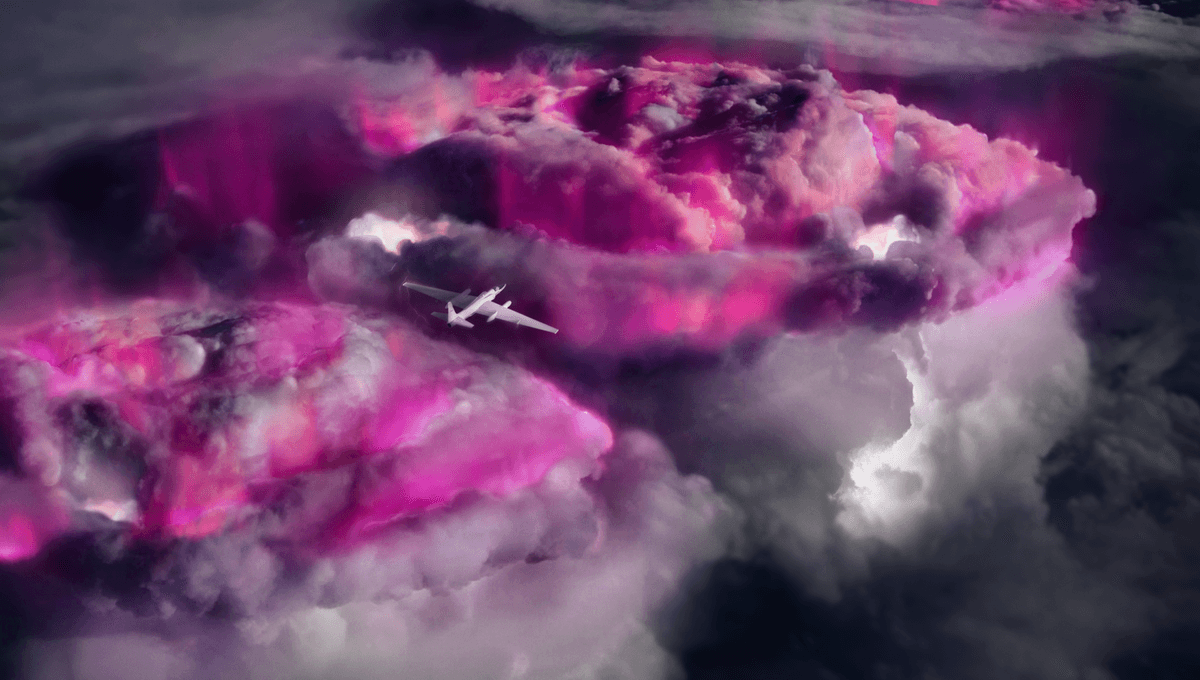
Gamma rays are emitted in nuclear reactions and from the most extreme events in the universe such as supernova explosions, black holes, and more – but they can also come from closer to home. Over the last three decades, scientists have discovered that thunderstorms have the ability to create gamma rays. New research has highlighted how the most energetic form of light happens within storms.
Gamma-ray events in thunderstorms are divided into terrestrial gamma-ray flashes (TGFs), lasting up to 100 microseconds; and gamma-ray glows, which can last hundreds of seconds. The new work also found what the researchers have dubbed flickering gamma-ray flashes (FGFs), which consist of pulses with a longer duration than the TFGs (hundreds of milliseconds), and they appear to be connected to the longer-lasting glows.
“There is way more going on in thunderstorms than we ever imagined,” co-author Professor Steve Cummer, from Duke University, said in a statement. “As it turns out, essentially all big thunderstorms generate gamma rays all day long in many different forms.”
Originally, it was thought that lightning might be responsible for the production of these gamma rays. It seems that this is not the case. Actually, when lightning is produced, it tend to follow the gamma-ray emissions – so maybe the gamma rays actually initiate the lightning.
Based on the work, the team believes that the formation of the lightning is created by free electrons accelerated by the intense electric field within the clouds. As they move upwards, they interact with air and water molecules, and these collisions can create reactions that include the formation of antimatter and gamma rays.
The work was only possible by using NASA ER-2 High-Altitude Airborne Science Aircraft, a retrofitted U2 spy plane from the Cold War. It flies twice as high as a commercial airplane and it was taken over the Gulf of Mexico 10 times to study tropical storms.
“A few aircraft campaigns tried to figure out if these phenomena were common or not, but there were mixed results, and several campaigns over the United States didn’t find any gamma radiation at all,” Cummer added. “This project was designed to address these questions once and for all.”
“The ER-2 aircraft would be the ultimate observing platform for gamma rays from thunderclouds,” explained Professor Nikolai Østgaard, from the University of Bergen, the lead investigator of the project and first author of one of the papers. “Flying at 20 km [12.4 miles], we can fly directly over the cloud top, as close as possible to the gamma-ray source.”
The observations also showed that the glow emission is not static, but is rather constantly changing, possibly limiting the energy that can build up inside. The team estimates that size matters in producing gamma rays, and they think not all storms can make them – but more than half of all tropical storms can.
“The dynamics of gamma-glowing thunderclouds starkly contradicts the former quasi-stationary picture of glows, and rather resembles that of a huge gamma-glowing boiling pot both in pattern and behavior,” said Professor Martino Marisaldi, also from the University of Bergen and first author of another one of the papers.
The gamma-ray emission is not dangerous. You’d have to be right in there to experience it – and if you were, you’d have other risks bigger than flashes of gamma rays!
The papers are published in the journal Nature and can be read here and here.
Source Link: Retrofitted Cold War Spy Plane Shows That Most Tropical Storms Are Radioactive